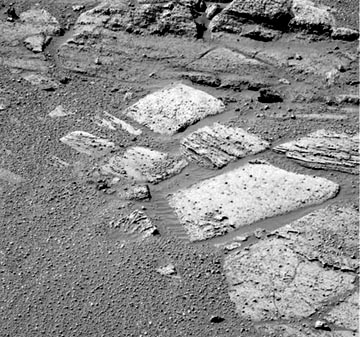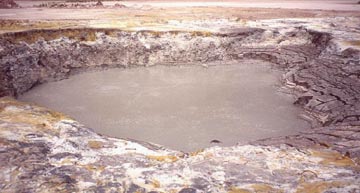"Such a high percentage of sulfur is unusual and this is what leads some folks to consider the volcanic origin (at the Martian bedrock). There are some minerals that have been identified in the infrared that would suggest the presence of water since they form in water. In particular, if this is a volcanic terrain that we are looking at, the presence of these minerals might suggest this was a hydrothermal area and sulfur is a component of such environments."
- February 11, 2004, Ronald Greeley, Ph.D., Arizona State University


Click here to subscribe and get instant access to read this report.
Click here to check your existing subscription status.
Existing members, login below:
© 1998 - 2024 by Linda Moulton Howe.
All Rights Reserved.

